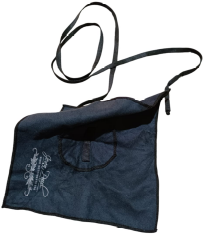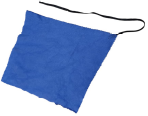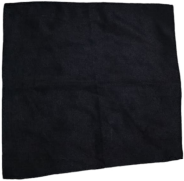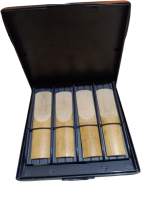
Written by Alfred Omwenga - Instagram @omwenga.alfred
About the saxophone
We all love the sweet mellow sound of the saxophone and maybe you play, you’re learning or you’re planning to learn how to play one.
The saxophone belongs to a category of instruments known as woodwinds which are usually played by blowing.
Saxophones come in four common types namely: Soprano saxophone, alto saxophone, tenor saxophone and baritone saxophone.
Of course there are other types of saxophones but that is a topic for another day.
How to clean a saxophone
Regardless of the type of saxophone you play, you will need to carry out routine maintenance for the saxophone, just like any other instrument.
We are going to focus on how to care for a saxophone and how to properly clean a saxophone as part of routine maintenance.
Importance of Cleaning Your Saxophone
It is important to clean your saxophone after each use for the following reasons:
1. To avoid build up bacteria and bad odor
As you blow the saxophone the moisture from your breath usually condenses inside the instrument at the bore and on the pads.
This creates a favorable environment for certain bacteria and fungi to thrive.
These bacteria then cause your instrument to stink and emit bad smell.
This is the reason why learning how to clean a saxophone neck is important.
Please be aware of the respiratory diseases that you could contract if you breathe in the bacteria into your lungs!
2. To increase longevity of your instrument and avoid costly repairs
The moisture that builds inside the instrument especially on the pads can cause gunk to build up on the pads and cause them to be sticky.
This causes undesired response from the keys and the tuning of your saxophone will therefore be affected.
You will incur unnecessary cost because you will need to look for a repair technician to replace the sticky pads.
Learning how to clean inside a saxophone will save you some pennies in the long run.
3. To maintain optimum working condition of the instrument
The instrument has several moving parts that form the key-work mechanism of the instrument.
These parts include the rods, screws, springs and corks.
When dust particles and debris settle on these parts and combine with humidity, they can create chemical reactions that cause rust which prevent the parts from working properly.
On the other hand, dust and high humidity can tarnish the finish on your instrument or even corrode the lacquer.
Having considered the above compelling reasons as to why you should know how to clean the saxophone on a regular basis, let us now look at the protocol of cleaning your instrument and the correct kit to use in the process.
How do you clean a saxophone? - The tools to use
1. Microfiber Body Swab

This is also known as bore swab. This is a piece of cloth attached to a string with small weights at one end.
You insert the weighted string through the bell of the saxophone and then you pull it through from the other end.
This process pulls the cloth through the bore and absorbs the moisture, keeping it dry.
It is important to make sure the cloth is made of microfiber material because it does not leave dregs on the surface of the instrument and also does not scratch the finish.
2. Microfiber neck swab - how to clean the neck of a saxophone

It works the just like the body swab but it is made smaller to enable it pass through the neck of the instrument, which has a smaller bore compared to the bore of the body.
The neck swab is also used to clean the mouthpiece using the same procedure.
3. Polishing cloth

The polishing cloth is used to dry the outside surface of the saxophone and to clean the grease that accumulates on the instrument from your fingers.
Be careful not to bend the rods of the instrument while undertaking this process.
You should use a microfiber polishing cloth to protect the lacquer of the instrument from scratching.
4. Padsaver - how to clean saxophone pads

This is a rod made of plastic or metal and covered with fluffy fiber.
It is usually inserted through the bore of the instrument before storage to absorb extra moisture in order to ensure longevity of the saxophone pads.
Accumulation of moisture on the pads can cause growth of fungi and bacteria especially on pads made of leather.
5. Reed-guards - How to clean saxophone reeds

These are accessories used to store and organize your reeds.
They also prevent your reeds from warping, cracking or getting chipped. Remember reeds are extremely delicate pieces of cane and they are expensive to purchase.
Always make sure to wash your reeds and dry them using a clean piece of cloth.
6. Mouthpiece cleaning brush - how to clean your saxophone mouthpiece

This is a piece of cleaning brush you can use when washing the inside of the mouthpiece.
This can be used together with regular liquid dish soap and cold running water.
I usually advice one to wash your hands to avoid grease from accumulating on the instrument.
Cleaning your mouth before blowing into your saxophone :)
I can never over emphasize the importance of washing your mouth to prevent food particles shooting into the instrument and causing growth of nasty bacteria and bad smell.
Packing your saxophone after use
Once you are done playing your instrument, make sure to detach the neck and the mouth piece from the body.
Start by swabbing the body of the instrument, insert the pad saver and place the instrument in the case.
Proceed to swab the neck and the mouthpiece and place them in the right compartments in the case.
Most saxophone cases have a pocket on the outside.
Keep your swabs and reeds in this compartment whenever possible.
You do not want to keep them in the same compartment with the instrument as this will raise humidity in that compartment (not good for the pads).
Ensure you wash and air the swabs regularly for obvious reasons.
By the way, it is good to throw in those little silica bags in both compartments of the case.
They do a good job to absorb moisture.
Don't use hot water!
I once used hot water to wash my mouthpiece and saxophone neck.
I almost screamed when I noticed the lacquer stripping off the neck right before my eyes!
Do not repeat my big mistake, cold water is just sufficient.
Also, take your instrument to a good technician for check -up, maintenance and disinfection at least once or twice a year.
Good luck as you make music!
Alfred is a saxophone teacher and performer with more than 7 years of experience.
He shared these insights with us to help our clients take care of their instruments.



